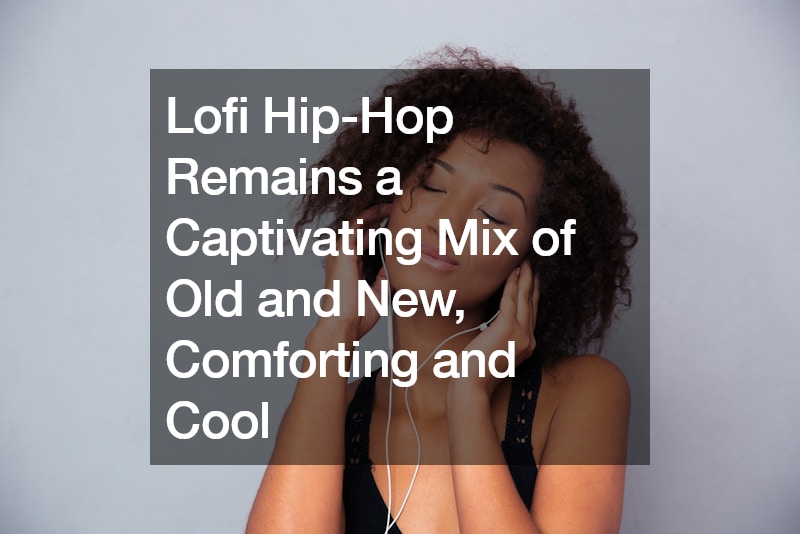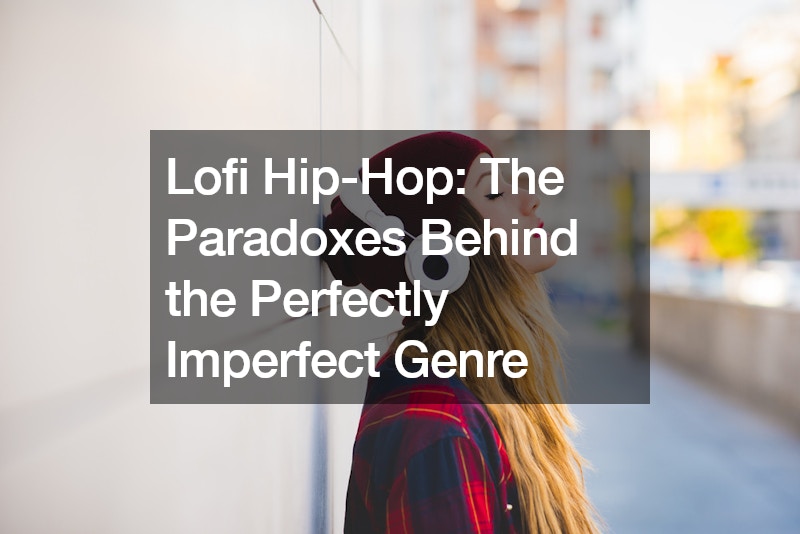
Lofi hip-hop isn’t just a music genre; it’s a cultural phenomenon that has become a staple for chill vibes and study sessions. It blends imperfections with modern tech in a way that’s both charming and perplexing. So, what’s behind this genre’s unique appeal and its widespread success? Let’s dive into the quirks that make lofi hip-hop so fascinating and beloved.
The Sound Quality Paradox
Lofi hip-hop thrives on its “low fidelity” vibe, embracing imperfections like distortion, tape hiss, and ambient noise. This is the opposite of the crystal-clear sound that’s become the norm in today’s music production.
Instead of striving for perfection, lofi revels in its flaws. But why this love for fuzziness?
Let’s rewind to the 1950s and 60s when recording technology was still getting its bearings. Back then, many artists had to work with what they had, leading to recordings that were gritty and full of character. This DIY approach—marked by rough edges and a bit of distortion—became a hallmark of an era when tech was evolving but still far from perfect.
Fast forward to the present, and it’s pretty wild how things have changed. Modern lofi artists use cutting-edge gear to recreate that same imperfect sound from decades ago. It’s like they’re using the latest technology to make their music sound like it was made in a makeshift home studio from the past. This blend of high-tech tools and retro imperfections creates a fascinating contrast: it’s all about looking back while pushing forward.
This nostalgia-driven approach isn’t just about a throwback to old-school vibes. It’s a way of honoring the past and celebrating how far we’ve come in music production. Lofi artists are effectively saying, “Hey, we love the modern tools we have, but we’re going to use them to make our tracks sound like they came from a simpler, fuzzier time.” It’s a unique fusion of old and new, where the quest for perfection takes a backseat to a charmingly imperfect sound.
Nostalgic Appeal
One of the coolest things about lofi hip-hop is how it taps into nostalgia. It’s especially popular among students and young professionals, offering a comforting soundtrack that echoes simpler times. With mellow melodies, jazzy chords, and the crackling of vinyl, lofi creates a warm, nostalgic vibe. Many tracks even include samples from childhood movies, cartoons, or other media, which adds a personal touch for listeners. It’s like a musical time machine that helps people relive a rosy version of the past, even if those memories are a bit hazy or idealized.
Production Accessibility and Oversaturation
Lofi hip-hop’s charm lies in its simplicity. The genre’s straightforward approach—featuring repetitive beats, basic melodies, and minimalistic arrangements—makes it relatively easy to produce. This accessibility has sparked a surge in new lofi tracks and artists, leading to a bit of an oversaturation problem.
Anyone with basic equipment can dive into lofi music production, but there’s a clear difference between the work of beginners and seasoned producers. The magic often lies in the details: experienced artists bring subtle nuances, intricate variations, and careful sound processing that add depth and richness to their tracks. These fine touches might not be obvious to every listener but they significantly enhance the overall quality of the music.
While producing lofi music is easy enough, the sheer volume of tracks available means it can be tough for individual pieces to stand out. The repetitive and formulaic nature of the genre can sometimes lead to a homogenized sound. Yet, this repetition is also what makes lofi a staple of internet culture. The endless stream of beats offers a soothing backdrop for studying, relaxing, and other activities, creating a unique corner of internet folklore.
Mainstream Popularity
Lofi hip-hop might have started as a niche genre, but it’s now a mainstream hit. Thanks in part to the availability of lofi hip hop sample packs, producers can easily craft tracks that fit the genre’s vibe while adding their personal touch. This has helped lofi hip-hop reach a broad audience and maintain a strong presence on streaming platforms. Popular playlists like “Beats to Relax/Study To” have millions of followers, showing that lofi’s appeal goes way beyond its niche roots.
Even with this mainstream success, many lofi artists fly under the radar. While listeners might recognize the genre’s iconic visuals and stream popular playlists, they might not know much about the individual creators behind the music. It’s a paradoxical mix: lofi hip-hop is both a niche genre and a widely influential musical style.
The Bottom Line
Lofi hip-hop is a blend of contradictions that give it its unique charm. Its embrace of low-fidelity sound, nostalgic feel, easy production, and mainstream popularity all play a role in its ongoing appeal. These paradoxes make lofi hip-hop a fascinating case study in balancing imperfection with modernity.
As the genre continues to evolve, it’ll be interesting to see how these contradictions shape its future. Will lofi remain the cozy, familiar backdrop to our digital lives, or will it shift with new musical trends? Only time will tell, but for now, lofi hip-hop remains a captivating mix of old and new, comforting and cool.
.



